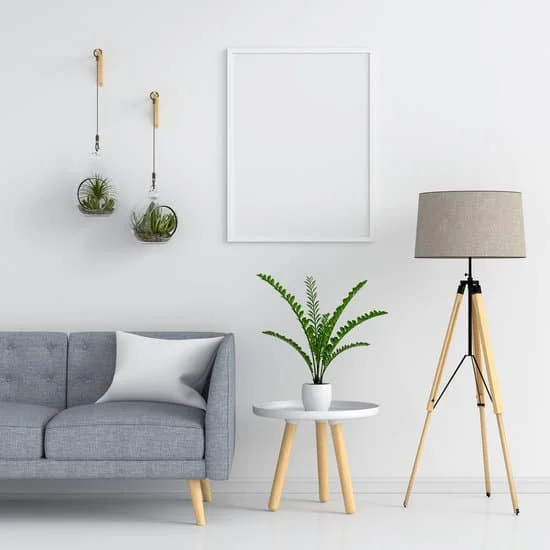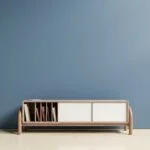In today’s society, it seems that everywhere we turn, there is a palpable obsession with home decor. Social media platforms are flooded with perfectly staged living rooms, meticulously curated wall galleries, and stunning kitchen makeovers. The question arises: why are we so obsessed? What is it about home decor that captivates us and drives us to invest our time, energy, and resources into creating beautiful living spaces?
One major factor contributing to the obsession is the influence of social media. Platforms like Instagram and Pinterest have become virtual galleries of inspiration, showcasing endless possibilities for home decor. People now have direct access to an abundance of ideas and styles at their fingertips, empowering them to transform their homes into visually appealing havens.
At its core, the fascination with home decor stems from our innate human need for self-expression through our surroundings. Our homes serve as a reflection of our identities and values – they speak volumes about who we are and what matters most to us. We long for a space that feels uniquely ours, where we can relax, recharge, and feel a sense of belonging.
Additionally, the “nesting” instinct plays a significant role in this obsession. As creatures who seek comfort and security, we naturally gravitate towards creating spaces that provide a sense of warmth and coziness. A well-decorated home helps satisfy this desire for comfort while also allowing us to showcase our personal style.
As we explore further in this article, other factors such as the correlation between home decor and self-esteem, social validation through social media likes and comments, influences from interior design shows, the desire for status and success reflected in one’s living space all contribute to our unrelenting fascination with home decor.
By understanding these underlying motivations behind our obsession, we can begin to appreciate the transformative power that lies within creating a space that truly reflects ourselves while embracing the joy of decorating our homes.
The Psychology Behind Home Decor Obsession
Home decor is not just about making our living spaces look visually appealing; it taps into something deeper within us – the innate human need for self-expression. Our surroundings play a vital role in reflecting our identity and personal style. The psychology behind home decor obsession lies in the profound connection between our homes and our sense of self.
One reason why we are so obsessed with home decor is that our homes serve as a sanctuary, a respite from the outside world where we can truly be ourselves. It’s no wonder then that we are driven to create spaces that reflect and nurture our individuality. Whether it’s through carefully chosen colors, furniture, or artwork, we find comfort and satisfaction in curating an environment that resonates with who we are.
Additionally, the nesting instinct plays a significant role in our obsession with home decor. As human beings, we have a natural desire for comfort and security. Creating a cozy and aesthetically pleasing living space satisfies this instinct by providing us with a sense of stability and tranquility. Moreover, studies have shown that having control over one’s environment can reduce stress and boost overall well-being.
To cultivate feelings of self-worth, many individuals turn to home decor as a means of expressing their unique tastes and preferences. A well-decorated home can act as validation of their style choices and creativity, leading to increased self-esteem. When you step into a space that reflects your personality and tells your story, it can instill a sense of pride and accomplishment.
Overall, the psychology behind home decor obsession highlights how deeply intertwined our environments are with our emotions, well-being, and sense of self. Through deliberately styling our living spaces to match our preferences, we find solace, creative fulfillment, and the opportunity for personal growth.
- Key Points:
- Home decor obsession is driven by the innate need for self-expression and the desire to create a sanctuary that reflects our identity.
- The nesting instinct and longing for comfort play a significant role in our fascination with home decor.
- Curating a visually appealing and harmonious living environment can boost self-esteem and provide a sense of accomplishment.
Connection Between Home Decor and Self-Esteem
One of the reasons why we are so obsessed with home decor is the correlation between a well-decorated home and increased feelings of self-worth. Our living space is an extension of ourselves, and how we choose to decorate it reflects our personality, tastes, and values. When we create a visually appealing and harmonious environment, it can have a profound impact on our overall well-being and sense of self.
Numerous studies have shown the psychological benefits of a visually pleasing living environment. A well-decorated home can reduce stress levels, promote relaxation, and improve concentration. It provides a sense of comfort and security, allowing us to feel more at ease in our own space. In turn, this positive atmosphere can greatly influence our mood and self-perception.
Home decor also plays a crucial role in cultivating a positive self-image. When we invest time, effort, and resources into decorating our homes, we are essentially investing in ourselves. By surrounding ourselves with beauty that resonates with us personally, we are able to express our individuality and affirm our unique identity. This process allows us to create a space that truly represents who we are and what matters most to us.
In a society that often places great importance on external validation, home decor offers an opportunity for self-validation. A well-decorated home not only brings joy to its inhabitants but can also impress others and garner admiration from friends and family. Additionally, sharing photos of aesthetically pleasing spaces on social media platforms like Instagram provides another avenue for validation through likes, comments, and followers.
| Statistic | Data |
|---|---|
| Percentage of people who believe their surroundings affect their mood | 86% |
| Average amount spent on home decor per year | $1,200 |
| Percentage of people who feel more confident in a well-decorated space | 72% |
| Number of Instagram posts tagged with #homedecor | over 12 million |
These statistics highlight the widespread recognition of the impact that our living environment has on our emotional well-being. They also demonstrate the significant investment that people are willing to make in order to create a space that enhances their self-esteem.
Social Validation and the Impact of Social Media
With the rise of social media platforms such as Instagram, Pinterest, and TikTok, it is no surprise that the obsession with home decor has been further intensified. Social media has transformed the way we interact and share ideas, including our interior design choices. This section will delve into the connection between social validation and the impact of social media on our fascination with home decor.
The Power of Likes, Comments, and Followers
One of the key drivers behind the obsession with home decor is the pursuit of social validation. In today’s digital age, receiving likes, comments, and gaining followers has become a measure of success and popularity. Showcasing a well-decorated space on social media platforms enables individuals to seek approval and validation from their peers.
Likes and positive comments act as a form of external affirmation for one’s taste in home decor. They provide a sense of belonging and acknowledgment from an online community who appreciates their style choices. As a result, there is a growing pressure to create aesthetically pleasing homes that are “Instagram-worthy” in order to maintain or increase one’s follower count.
However, it is important to acknowledge that while social validation through digital means can be gratifying, it should not be the sole driving force behind decorating one’s home. The true value of home decor lies in personal satisfaction and creating a space that reflects one’s own identity and preferences.
The Pressure to Keep Up
Social media also amplifies the pressure to keep up with ever-evolving trends in home decor. Platforms like Instagram constantly expose users to aspirational interior design photos that showcase perfect color palettes, impeccable organization techniques, and flawless furniture arrangements.
The constant stream of beautifully designed spaces can lead individuals to feel inadequate or as if their homes are not living up to societal expectations. There is an underlying sense of competition to have homes that rival those seen on social media platforms.
Furthermore, as trends come and go at a rapid pace in the online world, individuals may feel the need to constantly update their home decor to stay relevant. This can result in excessive consumption and waste as people rush to replace perfectly functional items with new ones simply to conform to fleeting trends.
Influences from Interior Design and Home Improvement Shows
Interior design and home improvement shows have become incredibly popular in recent years, captivating audiences with their stunning transformations and expert design advice. These shows have had a significant influence on our obsession with home decor, shaping our ideas of what a well-decorated home should look like and inspiring us to revamp our own living spaces.
One major reason why interior design and home improvement shows have such a strong impact is their ability to showcase the transformative power of good design. Viewers are drawn to the dramatic before-and-after reveals, where a seemingly dull or outdated space is completely revamped into a beautiful, functional oasis. These shows tap into our desire for change and improvement, showing us what is possible with some creativity and skilled craftsmanship.
In addition to the visual appeal of these shows, they also provide valuable tips, tricks, and guidance from professional designers and contractors. From choosing color palettes to arranging furniture, viewers gain insight into the principles of good design and how to apply them in their own homes. This educational aspect contributes to the obsession with home decor as viewers feel empowered to take on DIY projects or work with professionals to achieve their desired aesthetic.
Furthermore, interior design and home improvement shows have created an aspirational culture around home decor. The stunning homes featured on these shows often represent luxury or high-end style, creating a desire for similar spaces that convey status or success. Many viewers strive to replicate the designs they see on television, sometimes going as far as purchasing identical furniture pieces or decor items in an attempt to recreate the atmosphere they admired.
Overall, interior design and home improvement shows continue to fuel our obsession with home decor by offering inspiration, education, and aspiration. Whether we are seeking a simple refresh or a complete renovation, these shows provide us with ideas and motivation to transform our living spaces.
As we continue along this trend of being obsessed with home decor, it’s important to remember that personal style should always guide our choices and that the process of decorating should be enjoyed, rather than seen as a stressful competition to recreate what we see on TV.
Home as a Reflection of Status and Success
The concept of home decor goes beyond the aesthetic appeal or personal taste. For many individuals, their home serves as a reflection of their status and success in society.
The way one’s living space is decorated and furnished can convey a message about their social standing and achievements. In this section, we will delve into the relationship between home decor and social status, the portrayal of wealth and success through a well-decorated home, and the pressures to impress others and create a sense of accomplishment through home decor.
The Relationship Between Home Decor and Social Status
Home decor has become a means for individuals to showcase their social status. People from all walks of life use their homes to convey messages about their achievements, aspirations, and overall lifestyle.
Those who are financially successful may opt for luxurious furniture, high-end artwork, or designer decor items to show that they have reached a certain level of socioeconomic standing. On the other hand, individuals who cannot afford lavish furnishings may focus on creating a visually appealing space that still exudes elegance and good taste within their budget constraints.
Additionally, certain interior design styles are associated with specific socio-economic classes. For example, minimalist or Scandinavian-inspired designs are often associated with a more affluent lifestyle due to their clean lines and simplicity that require meticulous attention to detail. Meanwhile, eclectic or bohemian designs can be seen as a reflection of artistic expression or non-conformity.
The Portrayal of Wealth and Success Through Home Decor
A well-decorated home can often serve as visual proof of wealth and success. The choice of materials, finishes, and elaborate details in one’s living space can demonstrate an individual’s ability to afford expensive pieces or hire professional interior designers. It is not uncommon to find grandiose properties with opulent interiors designed specifically to awe visitors.
Furthermore, luxury brands have capitalized on the connection between home decor and status by offering exclusive collections that convey a sense of exclusivity and affluence. For example, collaborations between high-end interior-decorating-the-right-way/” target=”_blank” rel=”follow noopener”>fashion labels and home decor brands or artists enable individuals to elevate their homes with statement pieces that exude an air of sophistication.
The Pressures to Impress Others and Create a Sense of Accomplishment
In today’s highly visual and connected world, there is a growing pressure to impress others through the presentation of our homes. Social media platforms, such as Instagram and Pinterest, have created a culture where showcasing stunning interiors has become a norm. Individuals feel compelled to curate their spaces carefully for fear of judgment or exclusion from the aspirational lifestyles often depicted online.
Moreover, society sometimes places value on external indicators of success, which can include having a well-decorated home. As a result, people may feel the need to conform to societal expectations and invest significant amounts of time, effort, and resources into perfecting their living spaces in order to create a sense of accomplishment and recognition.
Transformative Power of Home Decor
The transformative power of home decor is a phenomenon that has captivated individuals around the world. It goes beyond mere decoration, as it holds the potential to greatly impact our emotional and psychological well-being. The choices we make when designing our living spaces have the ability to create a haven that reflects our personality, aspirations, and desires.
One of the most notable aspects of home decor is its therapeutic benefits. The act of transforming our living spaces can be incredibly cathartic, allowing us to exercise creativity and express ourselves in a tangible way. Psychologically, this process enables individuals to assert their autonomy and establish a sense of control over their environment. In turn, this can contribute to improved mental health by reducing stress levels and promoting a sense of serenity.
Furthermore, home decor has the power to enhance our overall well-being by creating an atmosphere that promotes positivity and comfort. A visually appealing and harmonious living environment has been shown to positively influence mood, increase productivity, and improve physical health. Colors, textures, furniture arrangement, and lighting choices are just some of the elements that can be carefully curated to evoke certain emotions or promote relaxation.
Moreover, home decor provides individuals with an empowering platform for self-expression. Through intentional design choices such as artwork selection or inclusion of personal mementos, one’s living space becomes more than just walls and furniture – it becomes an extension of themselves. This act of personalization fosters a sense of identity and belonging within one’s own space, ultimately contributing to higher self-esteem.
Economic Factors and the Home Decor Industry
The obsession with home decor goes beyond personal preferences and psychological factors. Economic factors also play a significant role in fueling this trend. The home decor industry has experienced exponential growth in recent years, with a global market value estimated to reach $619 billion by 2027. This lucrative industry encompasses a wide range of products and services, including furniture, lighting, textiles, flooring, and decorative accessories.
One major driver of the home decor obsession is consumer spending. As people increasingly prioritize creating aesthetically pleasing living spaces, they are willing to invest more money in home decor. This desire for beautifully decorated homes has led to a surge in consumer demand for innovative and high-quality products that cater to different styles and tastes.
The marketing and advertising strategies employed by businesses within the home decor industry also contribute to the obsession. Companies utilize various techniques such as social media campaigns, influencer collaborations, and targeted advertisements to promote their products and create a sense of urgency among consumers. These efforts showcase how specific pieces or trends can transform their homes, fostering a desire for constant updates and renovations.
Furthermore, economic factors are intertwined with the influence of social media on the obsession with home decor. Platforms like Instagram and Pinterest have become virtual showrooms where people can discover new design ideas, share their own creations, and connect with others who share their passion for interior design. This online presence not only exposes individuals to endless inspiration but also facilitates easy access to purchasing options from brands featured on these platforms.
Conclusion
In conclusion, the allure of home decor is undeniable and continues to captivate individuals across the globe. With the influence of social media, our innate need for self-expression, and the desire for comfort and sanctuary, it is no wonder that we are so obsessed with creating visually appealing living spaces. The correlation between a well-decorated home and increased feelings of self-worth cannot be overlooked, as well as the therapeutic benefits and empowering aspects of transforming our environments.
The impact of social validation through platforms like Instagram cannot be ignored when understanding this obsession. The pressure to have an “Instagram-worthy” home, garner likes, comments, and followers further fuels the desire for aesthetically pleasing spaces. In addition, interior design and home improvement shows showcase stunning transformations that often leave viewers yearning to replicate the same design in their own homes.
Furthermore, home decor has become a reflection of status and success. A well-decorated home often portrays wealth and accomplishment in society. This creates a sense of pressure to impress others and maintain a certain image through our living spaces. The economic impact of this trend is substantial as consumer spending on home decor continues to rise.
In light of these factors, it is important to embrace our own personal style and enjoy the process of decorating our homes. Our living spaces should be a true reflection of ourselves, providing solace, inspiration, and joy. Whether we use it as a form of self-expression or as a way to improve wellbeing, there is no denying that home decor holds immense value in our lives.
So why not let our creativity thrive and create spaces that truly inspire us? After all, there is something magical about transforming a house into a personalized haven that encapsulates who we are.
Frequently Asked Questions
Why does decorating make me happy?
Decorating can bring happiness because it allows individuals to express themselves and create a space that reflects their personality and style. The act of choosing colors, patterns, furniture, and accessories can be a form of self-expression and creativity which promotes a sense of satisfaction and joy.
Additionally, the process of transforming an empty or dull space into something visually pleasing and personally meaningful can evoke feelings of accomplishment and fulfillment. Seeing the final result of a well-decorated room can bring a sense of pride and happiness as it provides an aesthetically pleasing environment to live in.
Is decorating good for mental health?
Yes, decorating can be beneficial for mental health. Engaging in decor-related activities such as planning, organizing, and creating beautiful spaces can serve as effective stress relievers. It allows individuals to focus on something enjoyable and divert their attention from negative thoughts or anxiety-inducing situations.
Decorating also provides an opportunity for mindfulness as it requires individuals to be fully present in the moment while making creative decisions. This process helps promote relaxation, improve mood, enhance self-esteem, and reduce symptoms associated with stress or depression. Overall, decorating offers a positive outlet for emotional expression and contributes to overall mental well-being.
Does home decor make you happier?
Home decor has the potential to increase happiness by creating a comfortable, cozy, and personalized living environment that positively impacts our mood on a daily basis. A well-decorated home can elicit feelings of joy, contentment, pride, and relaxation simply by being surrounded by pleasing aesthetics that resonate with one’s personal taste. When our homes reflect who we are through carefully selected decor elements like artwork, photos, or sentimental items, they become soothing havens where we feel grounded and connected to ourselves.
Moreover, an inviting home ambiance fosters social interactions with family members or friends which further adds to our sense of happiness and well-being. By transforming our living spaces into environments that nurture positive emotions, home decor undoubtedly contributes to our overall happiness levels.

I’m thrilled to be your companion on this exciting journey through the world of home decor and design. With a passion for turning houses into homes and a keen eye for the finer details, I’m here to help you transform your living spaces into beautiful, functional, and meaningful havens.





